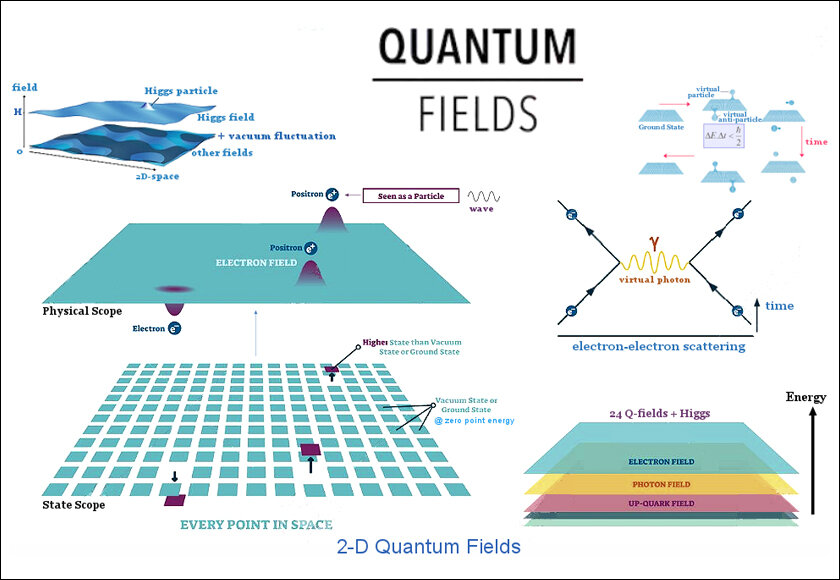Quantum Entanglement is the biggest mystery of science that could upend life as we know it, and explaining it is an unlikely but fascinating theory writes Satyen K. Bordoloi.
It is the stuff of romance fiction. Two lovers are separated by 140 million miles: one is on Earth, the other on Mars. But you ask one a yes or no question, and the other lover – 140 million miles away – instantly knows and answers in the opposite. This is impossible because as per classical physics, even the fastest ‘thing’ – light, would take around 13 minutes to travel that distance. How did the two lovers know what the other was asked?
Now replace ‘lovers’ with ‘entangled particle’ and you come to what is the biggest, most significant unsolved mystery of science (alongside consciousness) – how do quantum entangled particles communicate long distances? What is the big deal, you would ask? As an answer let me ask another question: would you like to transfer say 100 terabytes of data – not a few dozen or hundred miles – but 140 million miles and more, in an instant? If we figure out how quantum entanglement works, we will be able to do much more, indeed we would literally enter the realm of magic meeting technology. It has the potential not just to explain and thus change the quantum world, but everything else.

Hence, finding a solution to why and how quantum entanglement occurs – has occupied brilliant minds for decades. In a previous article, we talked about a theory that purports to explain it called Retrocausality which involves a sort of time travel in the quantum world. Here, we’ll discuss another theory to explain it that may not be as bizarre but is fascinating nonetheless: the Quantum Field Theory (QFT). But first, let us try to understand quantum entanglement simply.
What is Quantum Entanglement?
If you remember basic physics from school, then you know that most quantum objects like electrons or photons behave partly as a wave and partly as a particle i.e. they do not fit into the typical definition of either a traditional wave or particle. They can exhibit wave-like behaviour which are described by wave functions. These wave functions are mathematical representations of the probability of finding a particular electron or photon in a particular state or location. Thus, these particles can show both wave-like behaviours like interference and diffraction along with particle-like behaviour like being detected at a particular point.
Now, inside this, Quantum entanglement is the phenomenon where two particles become correlated in such a way that their properties get intrinsically linked. Thus, the state of one of those particles cannot be described independently of the state of the other no matter how far they are from each other. What is remarkable is that if you measure the property of one entangled particle, it instantaneously affects the state of the other entangled particle even if they are, as the example I gave, 140 million miles apart or even more, even a trillion miles apart.

This is what surprised even Albert Einstein, leading him to call quantum entanglement “spooky action at a distance”. Entanglement has been proven using multiple experiments so there is no debate about that part. What we still do not know is how this happens. One of the explanations has been the MWI – Many Worlds Interpretation theory proposed by physicist Hugh Everett III. You may not have heard of MWI, but almost everyone has heard of the multiverse, now being done to death by every Hollywood franchisee, and even the subject of the most celebrated film of this year – Everything Everywhere All At Once.
The only place the MWI theory has received unanimous acceptance is in cinema. The scientific community is deeply divided by it and its currency over the years has been plummeting – ironically in direct proportion to its rising status in cinema. The failure of MWI has pushed other theories to the limelight, like Retrocausality and more specifically the Quantum Field Theory.

Fields of Possibilities
The main idea of QFT is that all matter and energy in the universe are made up of fields interacting with each other. In this context, fields are regions of space where there is a probability of finding a particle. Different types of particles are associated with different fields, e.g. the electron field is associated with electrons, the photon field is associated with photons, and the Higgs field is associated with the Higgs boson.
This is a little complicated to understand. An imperfect way to visualise it would be to think of it like layers of blankets enveloping the entire universe atop and around each other. Thus, there is an electron blanket, a photon blanket, a Higgs field blanket etc. Another way to look at it would be to see gravity, indeed the original idea of QFT came from Newton’s work on the gravitational field.
How QFT can explain quantum entanglement is to see it in terms of gravity. Like in a gravitation field the effect on any object in the field is instantaneous no matter the distance, two quantum entangled particles behave in tandem no matter the distance between them. Thus, if the spin of one particle observed on Earth has been right, the spin of its quantum entangled particle 140 million miles away on Mars, would be left exactly at the instant when the other particle has been observed. If both the particles are in the same field spanning the entire universe, distance becomes irrelevant.

QFT has successfully explained a wide variety of physical phenomena, including electromagnetic force, the weak interaction, the strong interaction, and gravity. It has also been used to predict the existence of new particles, such as the Higgs boson. Though it is incomplete, someday it could lead to the full explanation of among other things, quantum entanglement paving the way for magical things like say transfer of many terabytes of data through huge distances instantaneously. The idea is that if you can have a data packet ride an entangled particle and observe it, then it will instantaneously appear on its entangled particle no matter how far away. This is of course just an idea and there is no proof yet that it would be possible. But the very possibility of it opens up the world to everyone concerned.
However, QFT is not without its challenges: perhaps the biggest is that it is difficult to reconcile QFT with general relativity. General relativity is a theory of gravity that describes gravity as a curvature of spacetime. However, QFT does not include gravity which has led to the development of quantum gravity theory in an attempt to unify QFT and general relativity.
Despite this and other challenges, QFT has revolutionised our understanding of the universe and helped develop new technologies, such as lasers and particle accelerators. QFT is still under development, but it is clear that it is a powerful tool for understanding the physical world.
People who have studied it, have been amazed by the results e.g. Nobel Laureate theoretical physicist David Gross has famously said about it, “I had set out to disprove quantum field theory – and the opposite occurred! I was shocked.”
The real shocker for the world would be when it explains the delicate intricacies involved in quantum entanglement. That day, a new universe will open up for us all.
In case you missed:
- Why a Quantum Internet Test Under New York Threatens to Change the World
- Quantum Internet Is Closer Than You Think, & It’s Using the Same Cables as Netflix
- Microsoft’s Quantum Chip Majorana 1: Marketing Hype or Leap Forward?
- Google’s Willow Quantum Chip: Separating Reality from Hype
- Alchemists’ Treasure: How to Make Gold in a Particle Accelerator (and Why You Can’t Sell It, Yet)
- A Data Centre on the Moon – From Sci-Fi to Necessity
- When Geniuses Mess Up: AI & Mistakes of Newton, Einstein, Wozniak, Hinton
- AI as Cosmic Cartographer: Teen’s Discovery Illuminates Positive Power of Artificial Intelligence
- AI Taken for Granted: Has the World Reached the Point of AI Fatigue?
- Kodak Moment: How Apple, Amazon, Meta, Microsoft Missed the AI Boat, Playing Catch-Up










1 Comment
Dear Satyen ji, greetings
Loved your article. These things can be searched in Gita.